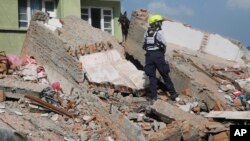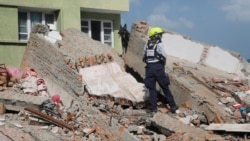In the span of less than three weeks, Nepal has twice been struck by disaster. On April 25th, a strong earthquake, registering 7.8 on the Richter scale, killed over 8,600 people and injured more than 16,000. Well over half a million houses were either damaged or totally destroyed. In high altitudes, landslides and instability have forced entire villages to relocate.
The initial earthquake was followed by over 100 aftershocks, including a 7.3 magnitude event on May 12 that caused yet more damage and fatalities.
For nearly two decades, USAID’s Office of Foreign Disaster Assistance has worked with the Government of Nepal to help strengthen its ability to respond to natural disasters. USAID also supported the Nepal Red Cross Society to pre-position critical emergency relief supplies in case of a disaster. These preparations helped to speed emergency aid to earthquake victims.
USAID funded the International Organization for Migration to identify, prepare, and preserve more than 80 open spaces to ensure the sites are available for humanitarian purposes. About half of these sites are now being used to shelter displaced people.
USAID also partnered with the Kathmandu-based National Society for Earthquake Technology to help educate homeowners, masons, and government authorities on the benefits of seismic-resistant construction.
Along with the international actors, the United States stepped up to deliver emergency aid and help in Nepal’s recovery effort. We deployed a special disaster team to Nepal—which includes search and rescue specialists—to coordinate the U.S. government response and help save lives. We have delivered more than 4,300 rolls of heavy-duty plastic sheeting to help the displaced. We have purchased and airlifted emergency medical supplies and given food assistance and hygiene kits to people in need. To date, the U.S. government has provided more than $37 million in humanitarian assistance for Nepal.
Today, the humanitarian community is ramping up efforts to help those who lost their homes before the arrival of the monsoon season in June. The international community has been generous in its response to Nepal’s disaster, with donations totaling more than $150 million. Nonetheless, much more is needed.
The United States will continue to provide humanitarian assistance to Nepal, and we call on the international community to join in the effort.

















